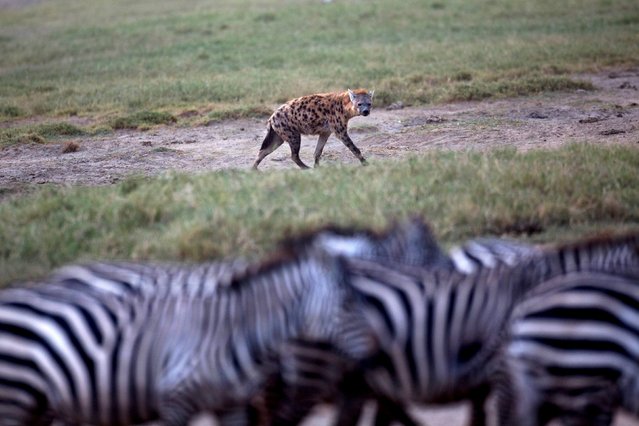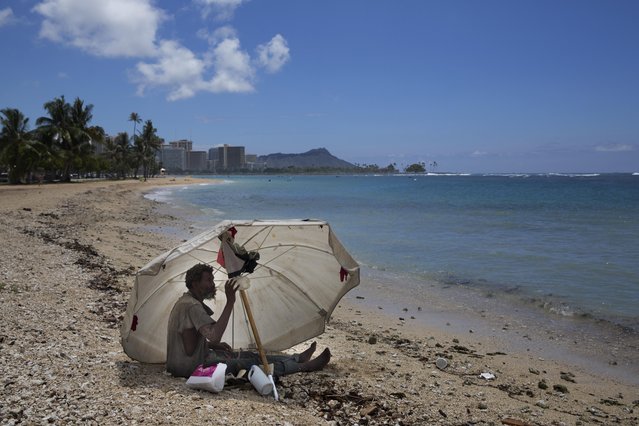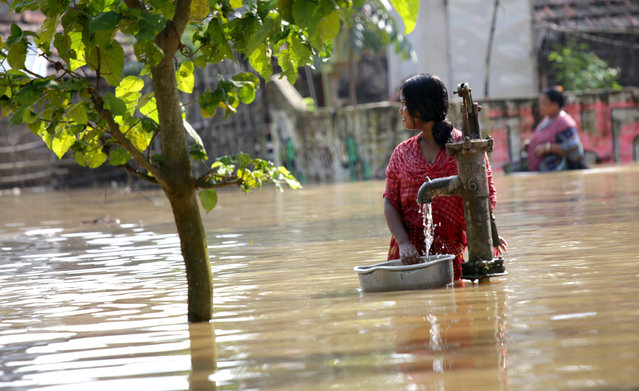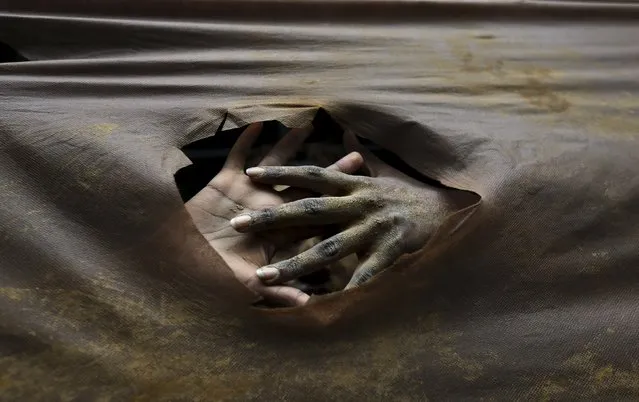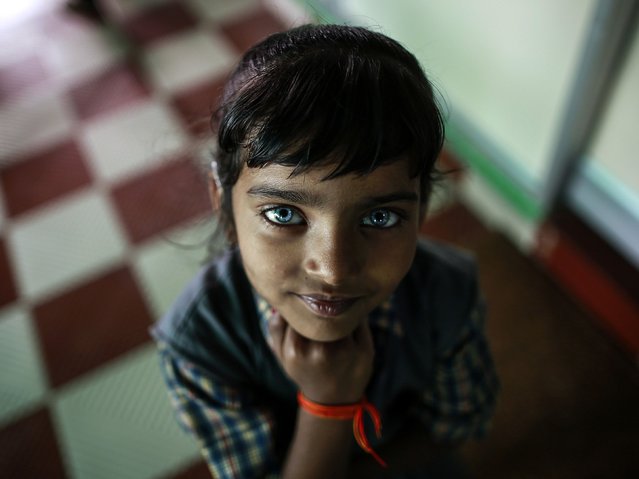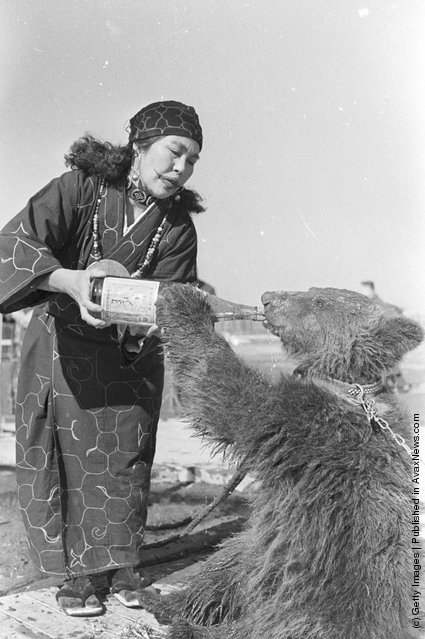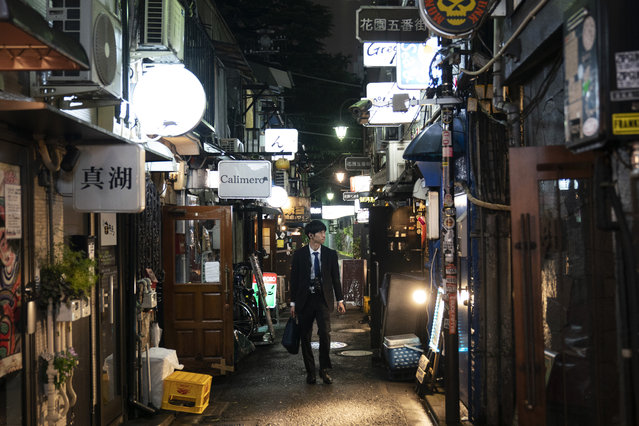
The Golden Gai is a sliver of old Tokyo in a modern metropolis filled with endless gleaming buildings. It's a one-of-a-kind tourist attraction, for sure. But it's also a place for a few drinks and friendly chatter among exhausted workers known as “salarymen”. Here: A man strolls through a narrow alleyway clustered with tiny bars and restaurants at the Golden Gai in the Shinjuku district of Tokyo, July 17, 2019. (Photo by Jae C. Hong/AP Photo)
14 Aug 2019 00:05:00,post received
0 comments

